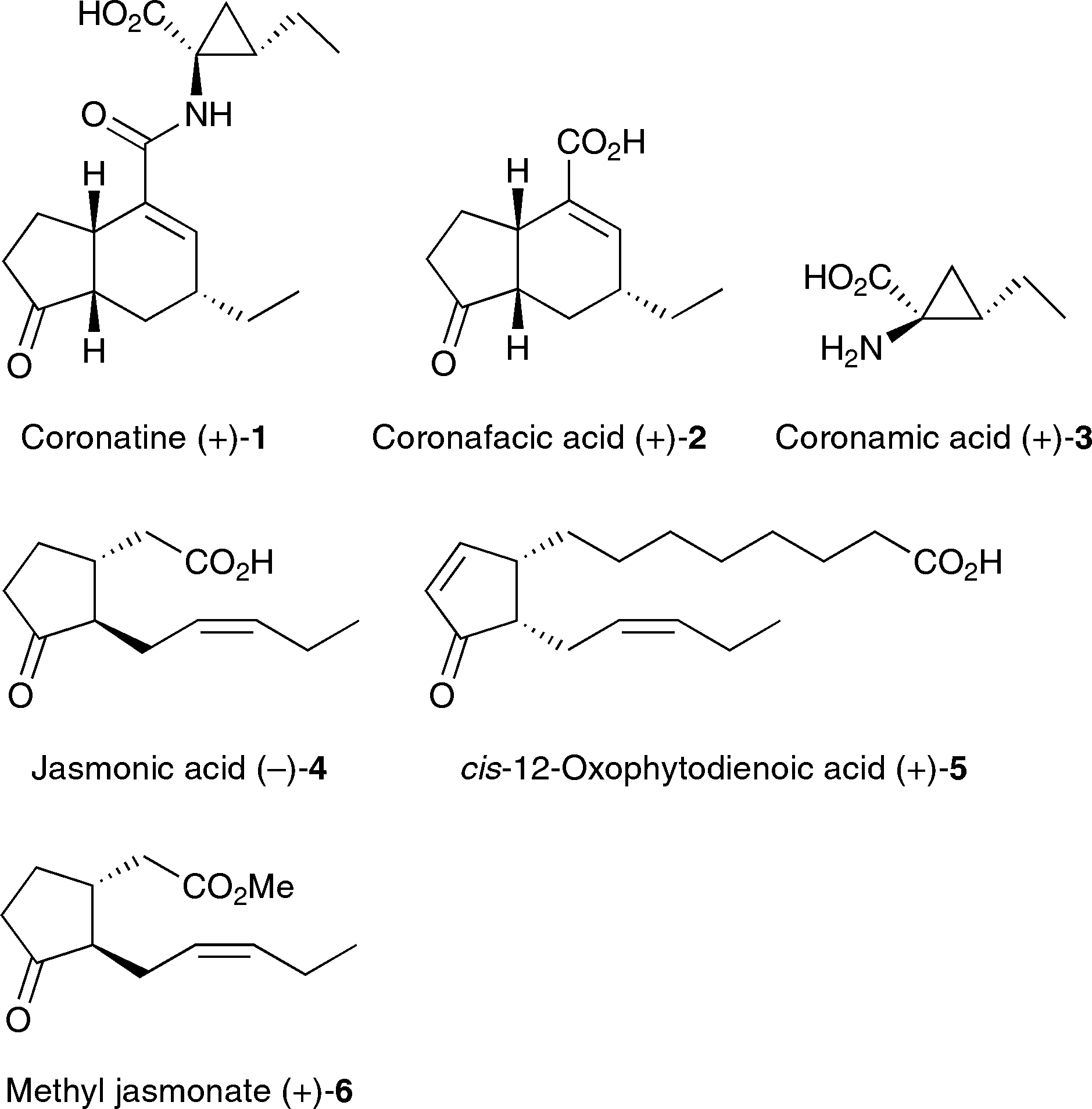Jasmonic Acid
CAS number: 6894-38-8
Jasmonic acid is an oxo monocarboxylic acid that is (3-oxocyclopentyl)acetic acid substituted by a (2Z)-pent-2-en-1-yl group at position 2 of the cyclopentane ring. It has a role as a plant metabolite and a member of jasmonates. It is a conjugate acid of a jasmonate(1-). It is an enantiomer of a (+)-jasmonic acid.
Related images
Related Questions and Answers
A: The study found that aphid infestation significantly promoted their own development and reproduction by increasing the salicylic acid (SA) content in the plants, which in turn suppressed the jasmonic acid (JA) signaling pathway. This suppression of JA signaling likely reduced the plant's defense against aphids, facilitating their growth and reproduction. Conversely, beetle infestation did not significantly affect the development, survival, or reproduction of aphids but led to a marked increase in JA content in the plants. Exogenous application of the SA analog 2,1,3-benzothiadiazole (BTH) also promoted aphid development and reproduction, while treatment with the JA analog methyl jasmonate (Me-JA) inhibited aphid development. These findings reveal a complex and asymmetric interspecific relationship between the two pests, where aphids can manipulate plant defense mechanisms to their advantage.
Q: How does the binding affinity of MBP-Ile compare to JA-Ile in the jasmonic acid signaling pathway?
A: Molecular docking simulations showed that MBP-Ile and JA-Ile had similar binding patterns to the COI1-JAZ co-receptor complex. MBP-Ile demonstrated a binding affinity of −395 kcal/mol, superior to JA-Ile's −370 kcal/mol. This enhanced binding affinity was attributed to additional π–π stacking and salt bridges in MBP-Ile's interaction with the receptor. The study concludes that MBP-Ile can compete with JA-Ile for binding to the COI1-JAZ complex, potentially disrupting the JA signaling pathway.
A: The study found that exposure to dibutyl phthalate (DBP) significantly induced JA-related outcomes, including decreased larval weight (9.58–18.8%) and rice biomass (11.7–34.2%). Monobutyl phthalate (MBP), the hydrolyzed product of DBP, triggered the JA signaling pathway, evidenced by upregulated genes encoding coronatine insensitive 1 (COI1), jasmonate ZIM-domain (JAZ), and MYC2 transcription factor, and promoted phytoalexins production. MBP conjugated with isoleucine, mimicking a JA bioactivator (JA-isoleucine conjugate) to occupy the binding site of the COI1-JAZ co-receptor protein, initiating the JA signaling pathway. This mechanism was consistent across other typical PAEs, with aliphatic chain length negatively contributing to these observations. The study concludes that the transformation metabolites of PAEs elicit pest defense while inhibiting rice growth through the JA signaling pathway.
A: The overexpression of PagHSF4 in poplar results in significant upregulation of genes involved in JA biosynthesis, leading to increased JA levels. This increase in JA is associated with reduced plant growth and biomass accumulation, likely due to the reallocation of carbon resources from primary growth to defense compound biosynthesis. Elevated JA levels also contribute to stomatal closure and enhanced salt stress sensitivity in poplar.
